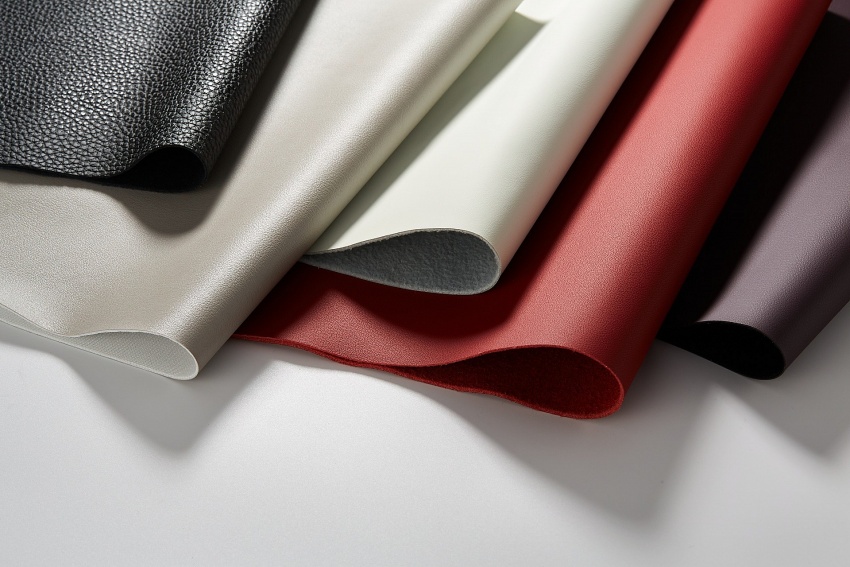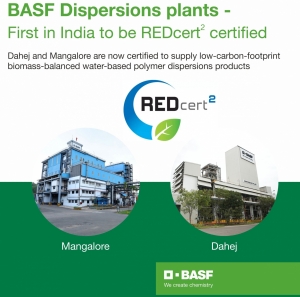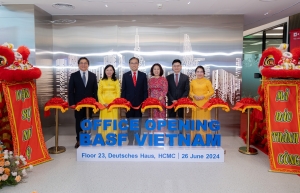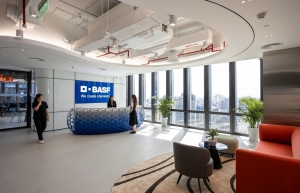BASF introduces future of sustainable synthetic leather
Synthetic leather made with Haptex 4.0 and polyethylene terephthalate fabric can be recycled together using an innovative formulation and recycling technical pathway without the need of layer peel-off process. This makes the reuse of the materials feasible, BASF said.
 |
According to Silvia Mok, vice president of Business Management Polyurethanes Systems, under Performance Materials Asia-Pacific at BASF, Haptex 4.0 is a technical breakthrough and aligns with commitments to advancing circular economy principles and promoting the use of recyclable materials in various industries.
"With Haptex 4.0, BASF is setting a new benchmark in enabling the green transformation of our customers with sustainable, high-performance and durable materials,” said Mok.
The industry faces a challenge to reuse or recycle end-of-life synthetic leather as it is a composite of multiple raw materials. The bonding strength of each layer is very high, making it difficult to separate them layer by layer, Mok added.
This complexity has traditionally made the reuse or recycling of the synthetic leather a challenge, which this challenge can now be tackled by Haptex 4.0. Owing to its recyclability, it is also produced without any waste residue, and hence a more sustainable manufacturing process.
Like the earlier generations, Haptex 4.0 also complies with stringent volatile organic compounds standards, as no organic solvents are used in the manufacturing process. This significantly simplifies and accelerates the production process of synthetic leather.
Beyond its environmental benefits, Haptex 4.0 is both affordable and durable, making it an ideal choice for a wide range of applications. Rigorous testing has demonstrated its exceptional anti-yellowing properties, resistance to heat and resilience under autoclave conditions.
From footwear and fashion to automotive interiors and furniture, Haptex 4.0 offers exceptional quality and longevity, providing consumers with a reliable and cost-effective alternative to traditional leather without compromising on performance or cost.
The first generation of Haptex was released in 2013 and has been widely adopted by different industries such as vehicles, apparel, footwear, and furniture.
BASF started doing business in the Asia-Pacific region more than a century ago. Today it boasts a production network of more than 100 sites, serving customers in 38 markets. Its portfolio comprises the segments of chemicals, materials, industrial solutions, surface technologies, nutrition and care, and agricultural solutions.
BASF generated sales of €68.9 billion ($75 billion) in 2023. Its Performance Materials division is at the forefront of the much-needed sustainability transformation in plastics, and its products are co-created with customers around the globe to bring innovations to major industry sectors such as transportation, consumer goods, industrial applications, and construction.
In 2023, the Performance Materials division achieved global sales of €7.2 billion ($7.83 billion).
 | BASF India plants receive certification BASF India Limited on February 8 announced that its two dispersions plants in Dahej and Mangalore, India, have each received REDcert2 certification. |
 | BASF Vietnam relocates head office BASF Vietnam has relocated its head office to Deutsches Haus Ho Chi Minh City. This move aligns with BASF’s commitment to the Future of Work (FOW) approach, sustainability, and innovation while prioritising employee well-being. |
 | Inside BASF Vietnam's new office BASF Vietnam will run its head office from Deutsches Haus Ho Chi Minh City from July 1. This new office move aligns with BASF’s commitment to the Future of Work (FOW) approach, sustainability, and innovation while prioritising employee wellbeing. |
What the stars mean:
★ Poor ★ ★ Promising ★★★ Good ★★★★ Very good ★★★★★ Exceptional
 Tag:
Tag:
Related Contents
Latest News
More News
- Heavy industries set for pilot greenhouse gas quotas (December 25, 2025 | 10:00)
- Swedfund invests in MSME growth and climate action in Vietnam (December 19, 2025 | 11:42)
- GreenYellow brings solar energy to light up remote schools in Tuyen Quang province (December 19, 2025 | 08:00)
- Charge+, Grab partner to develop EV charging network in Vietnam (December 18, 2025 | 17:11)
- Linking sci-tech and innovation to Vietnam’s net-zero future (December 18, 2025 | 14:31)
- Driving double-digit growth through green and circular transformation in Vietnam (December 17, 2025 | 09:00)
- Standard Chartered and ACCA deepen collaboration to develop Vietnam’s talent for a sustainable future (December 15, 2025 | 18:18)
- Schaeffler reports strong early output from Dong Nai solar project (December 12, 2025 | 15:16)
- Forestry conference highlights biodiversity and sustainability goals (December 09, 2025 | 13:35)
- Home Credit honoured among top 10 sustainable companies in trade and services (December 09, 2025 | 12:18)























 Mobile Version
Mobile Version